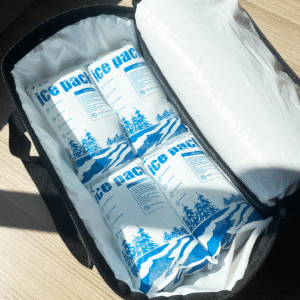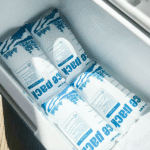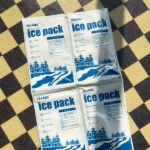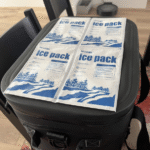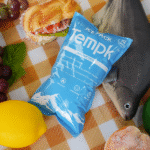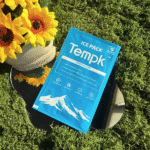How to Pack with Dry Ice: Sûr, Expédition conforme
Si vous demandez how to pack with dry ice, you need a method that keeps goods frozen, prevents pressure build-up, and passes inspections. Ce 2025 guide gives you a clear plan: smart layering, precise dry ice estimates, proper labels, and simple checklists. You’ll learn what to do for food, Pharma, and cross‑border shipments—and how to save money while staying safe and compliant.
-
Step-by-step layering: a practical “top‑bottom sandwich” that prevents warm spots and ruptures
-
Right quantity planning: daily sublimation rates and a quick buffer formula for summer and delays
-
Conditionnement & ventilation: how to choose insulation and avoid airtight seals
-
Regulatory essentials: marques, étiquettes de danger, and when declarations are needed in 2025
-
Tendances & outils: Expéditeurs VIP, PCM hybride + glace carbonique, and real‑time monitoring for fewer losses
How do you pack with dry ice step‑by‑step for different shipments?
Utilisez un, récipient isolé; Produits avant la référence; couche de neige carbonique au-dessus et en dessous; and separate goods from direct contact. Tape the outer box firmly but do not seal it airtight. Marque: «Dioxyde de carbone, solide (glace carbonique), Et 1845, Poids net en kg,” and apply the Class 9 étiquette. This method keeps a stable freeze, évacue le CO₂ en toute sécurité, and meets common 2025 guidage du transporteur.
Pourquoi ça marche (in plain language)
You’re building a cold “thermos”: insulation slows heat in, dry ice provides constant cold, and vents release gas so the box won’t bulge. Place fragile items away from direct contact to prevent freezer burn. Pour la nourriture, wrap items; for medical, add a logger to prove temperature. This layered approach is reliable whether you ship steaks overnight or biologics for two days.
What is the safest “layer order” to pack with dry ice?
Aim for this stack, top to bottom: dry ice → separator (carton) → products → separator → dry ice. The top layer pushes cold air down as CO₂ sinks, while the bottom layer protects during handling. Fill voids with kraft paper (breathable) rather than plastic that can trap gas. Keep the cooler lid closed loosely inside an outer box so gas escapes without losing too much cold.
| Layered Setup | Quoi utiliser | Pourquoi ça aide | Practical benefit to you |
|---|---|---|---|
| Expéditeur extérieur | Corrugated box + ruban adhésif | Force + ventilation | Survives transit; prevents pressure build-up |
| Isolation | EPS 1.5–2 in or VIP shipper | Ralentit le transfert de chaleur | Temps de maintien plus long, less dry ice needed |
| Separators | Cardboard sheets | Diffuses extreme cold | Prevents freezer burn and hot spots |
| Remplissage de vide | Papier kraft | Breathable cushioning | Better venting, less movement |
| Inner wraps | Food‑grade bag or pouch | Clean separation | Dry goods stay uncontaminated |
Conseils pratiques que vous pouvez utiliser aujourd'hui
-
Pour les aliments surgelés: wrap items; place a dry ice slab on top; fill gaps tightly.
-
For medical samples: use validated shippers and a temperature logger; place dry ice above and below vials.
-
For summer routes: add a 20–25% buffer to your dry ice amount and reduce door‑open time.
Cas réel: A delayed 48‑hour biologics shipment stayed within the frozen range thanks to dual‑layer dry ice and a VIP shipper; the logger confirmed stable temperatures, avoiding write‑off and re‑ship costs.
How much dry ice do you need—and how long does it last?
Plan on 5–10 lb (2.3–4,5 kg) de glace sèche par 24 heures par expéditeur, then add a 20–25% buffer. Better insulation and tight packing reduce the daily rate; hot routes and frequent handling increase it. En cas de doute, round up to prevent partial thaw.
Conseils élargis
Sublimation depends on wall thickness, packing density, et chaleur ambiante. EPS at 1.5–2 inches typically supports 24–48 hours with 10–20 lb. VIP shippers can double hold time for the same dry ice. If your route crosses hot hubs or weekends, calculate for the longest leg—not the average.
How to pack with dry ice using a quick quantity calculator
Use this simple formula
Daily rate × days in transit × 1.2 (tampon). Choose 6–7 lb/day for good EPS; 4–5 lb/day for premium VIP; 8–10 lb/day for thin liners or hot lanes.
| Durée | PSE (6–7 lb/jour) | VIP (4–5 lb/jour) | Ce que cela signifie pour vous |
|---|---|---|---|
| 24 heures | 6–7 lb | 4–5 livres | Overnight food boxes or next‑day diagnostics |
| 48 heures | 12–14 livres | 8–10 lb | Two‑day national routes |
| 72 heures | 18–21 livres | 12–15 lb | Long‑haul or customs‑prone lanes |
Conseils exploitables
-
Pre‑freeze products to at least −18 °C; you’ll spend less dry ice cooling down.
-
Split large loads into multiple boxes; you’ll vent CO₂ better and avoid handling flags.
-
Peser la glace sèche en kilogrammes pour les étiquettes; round up to the nearest 0.5 kg for clarity.
Exemple de terrain: A 2‑day seafood shipment used 14 lb in EPS and arrived rock‑solid despite a missed connection, thanks to a 25% buffer and tight void fill.
How to pack with dry ice for international air shipping?
Follow IATA/airline rules: emballage ventilé, Classe 9 étiquette, and “UN 1845” with net dry ice weight on the outer box and air waybill. If dry ice is the only hazardous material, a full dangerous‑goods declaration often isn’t required; confirm with your carrier.
Conseils élargis
Keep per‑package dry ice within airline limits for the flight type. Passenger flights allow much smaller quantities per piece than cargo flights; large totals typically require cargo services. Mark consignor/consignee clearly, and place labels on contrasting background. For destinations with strict inspections, include a packing list and simple handling note for inspectors.
How to reduce inspections and delays when you pack with dry ice
Pro moves
-
Use multiple smaller boxes to stay under per‑package limits.
-
Ajouter 24 hours of extra dry ice for customs or weather holds.
-
Tell the courier at pickup that the box contains dry ice; it improves handling and stowage choices.
| Exigence | What to show | Pourquoi ça compte | Pour toi |
|---|---|---|---|
| Étiquette de danger | Classe 9 (divers) | Universal recognition | Acceptation plus rapide |
| Nom propre | Dioxyde de carbone, solide (Glace sèche) | Correct identification | Avoids rework |
| Numéro de l'ONU | Et 1845 | Global standard | Smooth transit |
| Poids net | In kilograms | Safety/compliance | Prevents fines |
| Ventilation | Pas hermétique | Évite la pression | Plus sûr pour les manutentionnaires |
What packaging, isolation, and ventilation work best when you pack with dry ice?
Choose thick EPS (1.5–2 pouces) or a VIP shipper, use breathable void fill, and never create an airtight seal. Double‑box fragile coolers and add corner protection to prevent lid lift under vibration.
Conseils élargis
VIP panels extend duration without extra weight, often halving the dry ice needed. Kraft paper supports venting better than plastic. Add simple cardboard separators above and below goods to reduce extreme cold points. If you must use liners, leave a small flap open or a vent path.
How to pack with dry ice for maximum safety in small facilities
Facility‑level tips
-
Pack in a well‑ventilated area; avoid small, sealed rooms.
-
Portez des gants isolés; dry ice burns like touching a hot pan—just colder.
-
Store dry ice in coolers, not in sealed freezers.
-
Train packers on label placement and basic CO₂ safety.
| Choix | Bien | Mieux | What it means in practice |
|---|---|---|---|
| Isolation | PSE 1.5 dans | Expéditeur VIP | Same cold time with less dry ice |
| Remplissage de vide | Papier kraft | Molded inserts | Lower movement; faster pack-out |
| Fermeture | Tape seams | Tape + strap | Fewer box failures |
| Surveillance | Spot checks | Enregistreur + QR proof | Trust and audit trail |
Helpful visuals
(Replace image URLs with your own asset paths.)
2025 updates and trends in dry‑ice cold chain
Aperçu de la tendance
Dans 2025, shippers balance reliability with sustainability. VIP shippers and molded‑fiber coolers cut weight, while hybrid systems pair dry ice with phase‑change packs to protect items that should not freeze. Real‑time loggers and CO₂‑aware sensors reduce spoilage and automate claims. Le résultat: Moins de surprises, tighter budgets, and cleaner audits.
Quoi de neuf en un coup d'œil
-
Refroidissement hybride: Dry ice plus PCM sleeves prevents freeze damage in mixed loads.
-
Smarter routing: Live ETA and lane heat‑maps trim hold time, reducing dry ice needed.
-
CO₂ stewardship: More hubs reclaim and reuse CO₂ from sublimation processes.
Perspicacité du marché
Demand keeps rising with ecommerce frozen foods and biologics. Many teams now standardize two or three shipper “kits” (du jour au lendemain, 48-heure, long‑haul) with preset dry ice ranges and labels. Standard kits reduce training time and packing errors—and help you forecast dry‑ice use more accurately.
FAQ
1) How long does dry ice last in a shipping box?
Planifier pour 5–10 lb par 24 heures en fonction de l'isolation et de la chaleur ambiante. Ajouter un 20–25% de tampon for summer or delays.
2) Puis-je combiner des packs de gel avec de la glace sèche?
Oui. Keep gel packs near items that must stay above 0 °C and separate them with cardboard from direct dry‑ice contact.
3) Is it safe to touch dry ice?
Not with bare hands. Utilisez des gants ou des pinces isolés. Avoid confined spaces to prevent CO₂ buildup.
4) Do I need a dangerous‑goods declaration?
Si dry ice is the only hazardous material, many air carriers do not require a full declaration, but you must still label and mark UN 1845 avec un poids net. Check your carrier’s 2025 guide.
5) What’s the easiest way to estimate quantity?
Utiliser daily rate × days × 1.2. For EPS, commencer à 6–7 lb/jour; pour VIP, 4–5 lb/jour.
Résumé et recommandations
To master how to pack with dry ice, pre‑freeze items, build a vented layered stack, and label “UN 1845” with net weight. Size dry ice at 5–10 lb par jour plus a 20–25% de tampon. Choose EPS or VIP wisely, use breathable void fill, and add simple monitoring for proof.
Étapes suivantes (votre plan rapide)
-
Pick a shipper kit (du jour au lendemain / 48-heure / long‑haul).
-
Calculer dry ice with the buffer formula.
-
Paquet: dry ice on top and bottom with separators; fill voids with kraft paper.
-
Étiquette: Classe 9, «Dioxyde de carbone, solid—UN 1845, X kg.”
-
Piste avec un bûcheron; notify recipients about safe handling.
CTA: Need a validated pack‑out for your SKU? Request a 48‑hour design with logger‑verified hold time.
À propos du tempk
We design and qualify cold‑chain packaging for food and life sciences. Notre portefeuille comprend Expéditeurs VIP, dry‑ice‑ready coolers, et smart liners tested in a CNAS‑certified lab. Two standout advantages: custom pack‑out design per lane and in‑house thermal validation for repeatable results. We help you ship frozen goods with fewer claims and clearer audits.
CTA: Want a right‑sized kit and a dry‑ice calculator tailored to your lanes? Talk to our cold‑chain engineers today.






